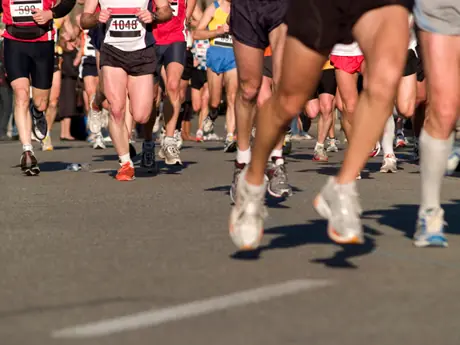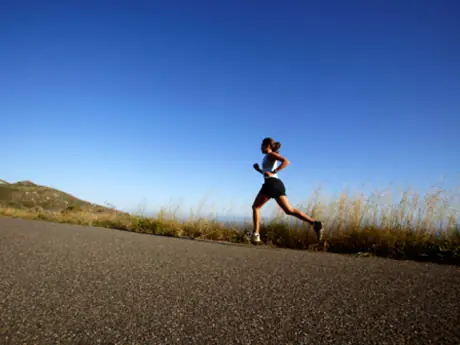
So you walk into the running store. You look here, you look there. There's so much variety that the shoes pile up like some perverse Cinderella story. They all look spiffy enough. They all seem to have enough of that cushioning-gel-air stuff. How different could they be?
If you put that question to a salesperson, depending on the store, you'll get either a shrug or a lecture on medial posts and curved lasts and ethylene vinyl acetate. And you might get some questions, too -- about the altitude of your arch, the heft of your heel strike, and your proclivity for pronation.
Whew. Shoes are a lot more complicated than they used to be. But since there's nothing that gives the folks at Cool Running a warm-all-over feeling more than seeing educated consumers in action, we've put together a few pointers.
What are the choices?
For most recreational runners, a basic training shoe is all you'll need. Others, however, have specialized interests and thus need specialized shoes. Here's a look at the different flavors.
Trainers. The vast majority of running shoes out there are basic training shoes. More than anything else, trainers are built simply for protection -- protection from constant pounding on hard surfaces and from your foot's own instabilities. Compared to light trainers and certainly to racing flats, these shoes are tanks. Heavy and loaded for bear, they're built to last through the miles.
Most runners don't need any other type of shoe. While lighter shoes will let you run slightly faster (about a second per mile faster for every ounce), the injury prevention of trainers should be the big draw for most runners. And with the greater variety among training shoes, you stand a better chance of getting the right match for your foot.
Light trainers. Lightweight training shoes are a good middleground between trainers and racing flats. For those who want to slice a little time off their race speed, light trainers are a good way to go without sacrificing too much protective cushioning. It's really only worth the sacrifice, however, if you are a competitive runner racing with at least a seven-minute-per-mile pace. If your races are longer than 10K, stick with regular trainers; cushioning is likely to be more important than light shoes as the miles stretch on.
Be aware that because light trainers have less cushioning than trainers, their cushioning wears out faster. If you are going to buy these shoes, try to use them almost exclusively for racing, and stick with the trainers for the rest of your running. Do be sure, though, to break in your light trainers with some short runs and speedwork before taking them to the races.
Racing flats. Racing shoes are built strictly for speed. To increase flexibility and reduce weight, they have about 15 percent less cushioning than trainers and reduced support and durability. Often they have less heel lift, too, which makes for added strain on the Achilles tendon. The reduced protection of racing flats increases the risk of injury and makes them really suitable only for the hard-core competitive racer. For these runners, though, the benefits can be substantial since these shoes are typically three or four ounces lighter than trainers. Theoretically, the weight difference could take twenty to thirty seconds off of a 40-minute 10K time.
Racing flats should be used only during races. During your training runs, pamper your feet with the extra protection of a good pair of trainers. As with light trainers, though, you should break in your racing flats with some short runs and speedwork before wearing them to the starting line.
Trail shoes. As more and more runners fall sway to the call of the wild, interest in trail shoes has increased dramatically in recent years. Once upon a time, trail shoes were just slightly modified hiking boots. No longer. Heavy, water-absorbent leather has given way to light, breathable nylon mesh. The high-top boot has been transformed into a trail shoe that looks like, well, a running shoe.
- 1
- of
- 4
Get ACTIVE on the Go


Couch to 5K®
The best way to get new runners off the couch and across the finish line of their first 5K.
Available for iOS | Android







Discuss This Article